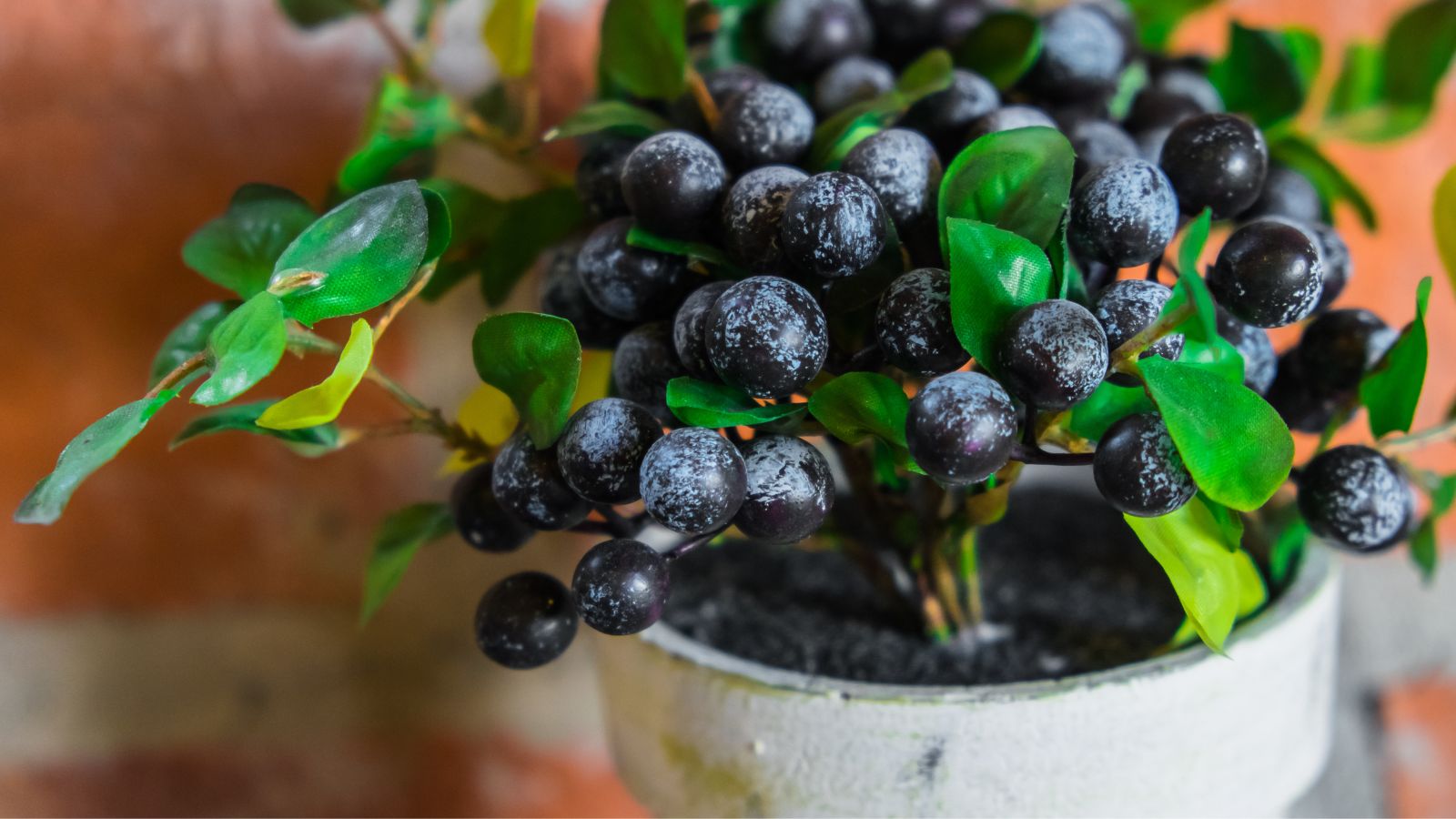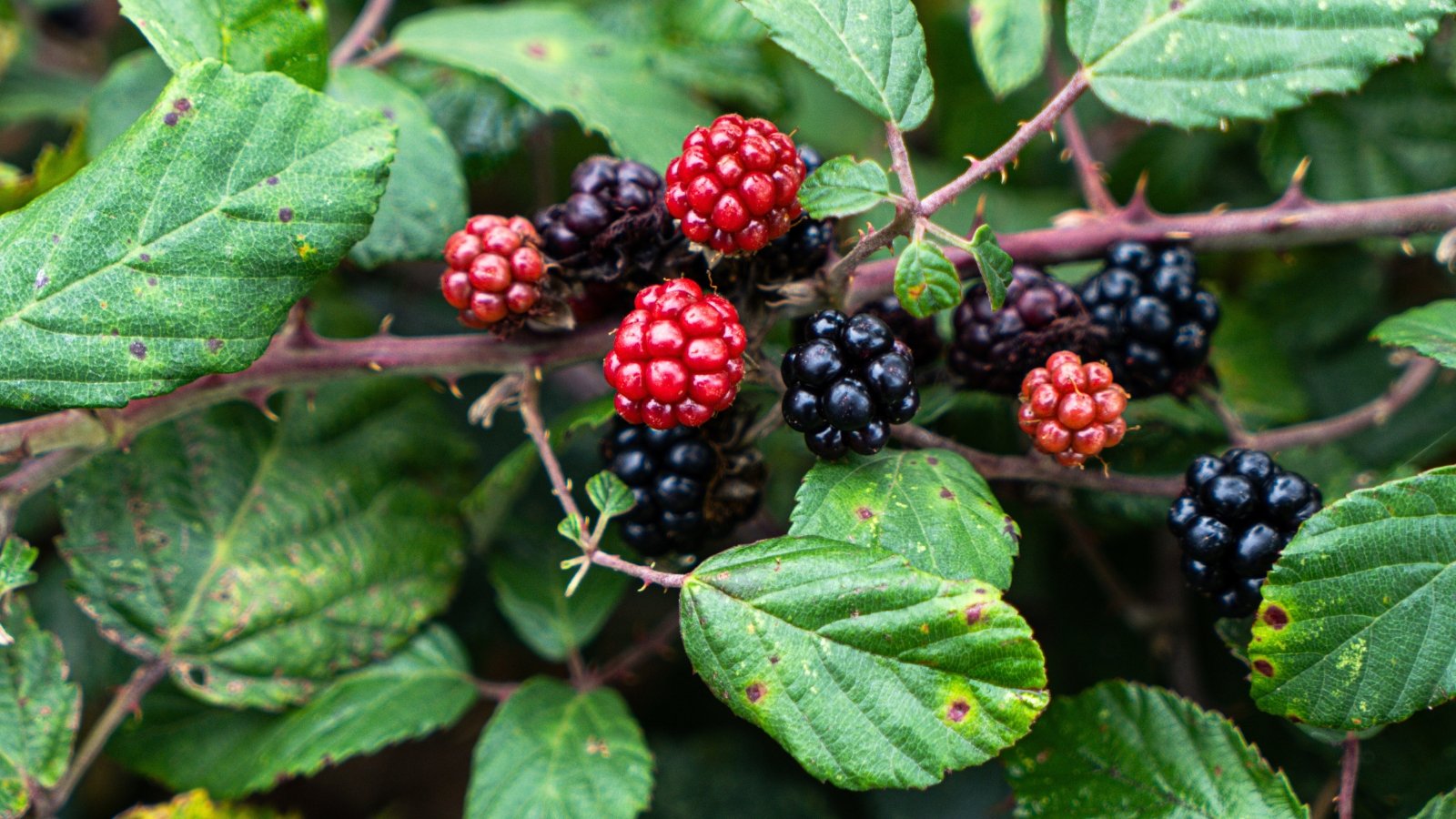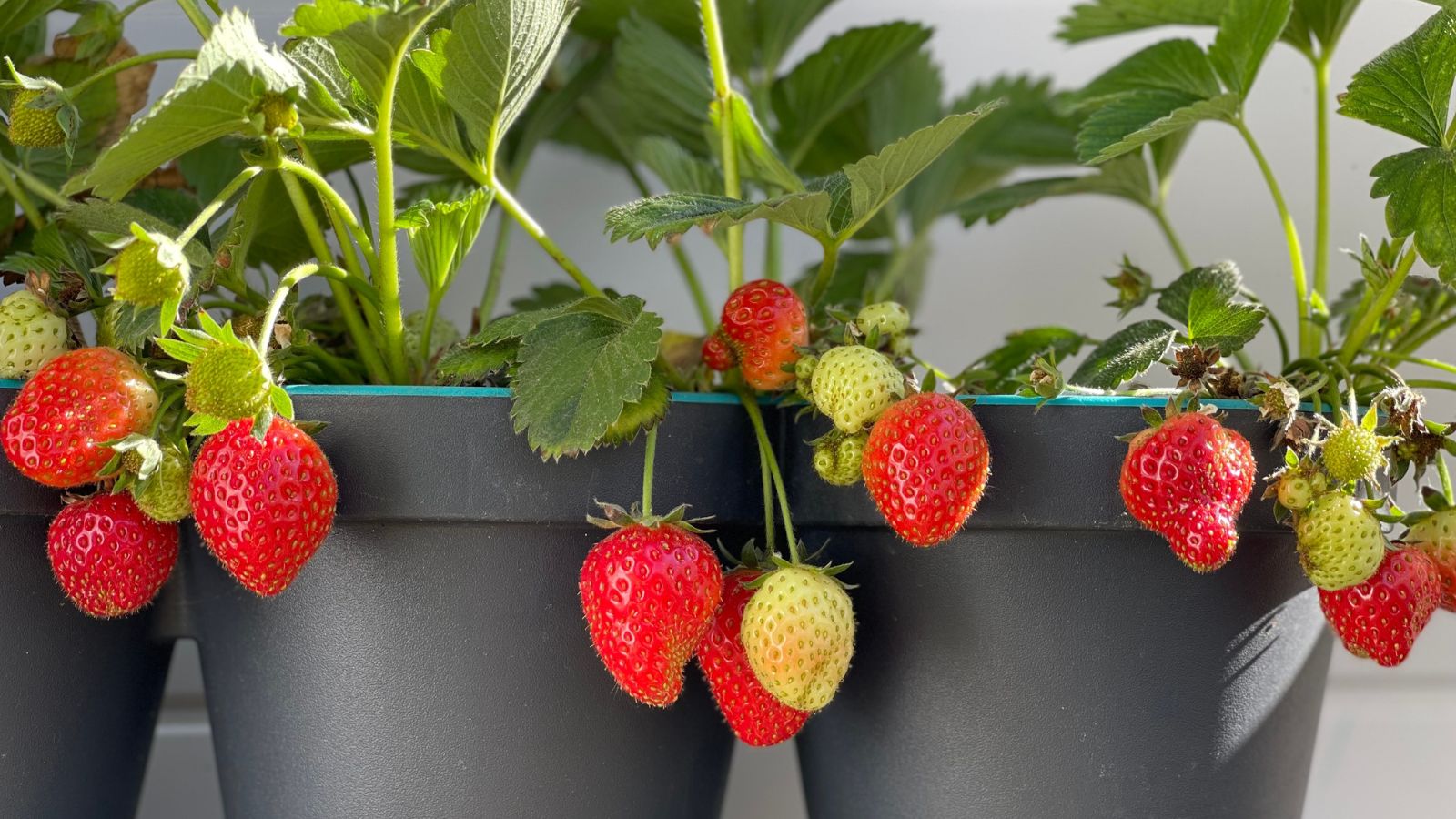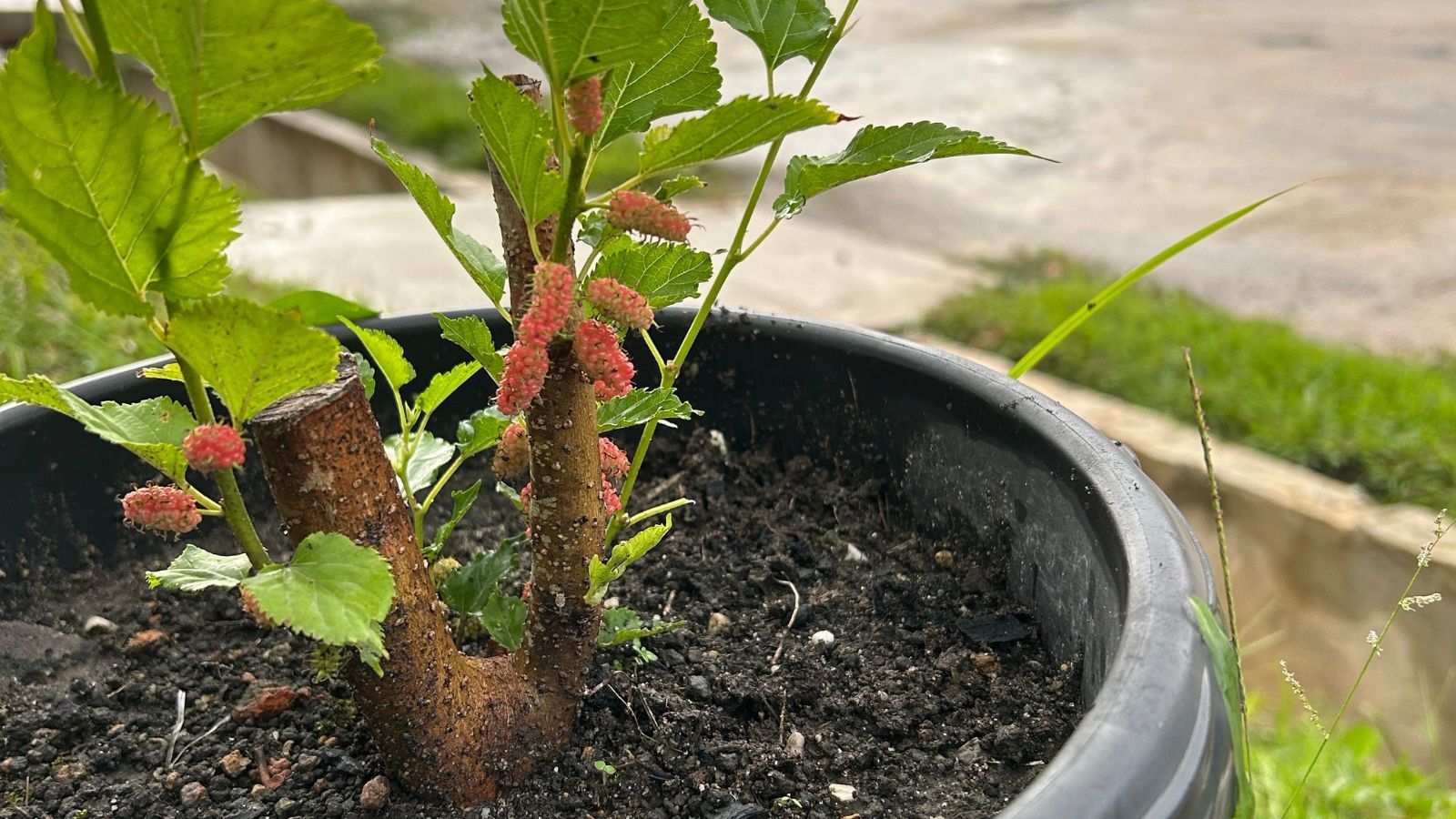PROTECT YOUR DNA WITH QUANTUM TECHNOLOGY
Orgo-Life the new way to the future Advertising by AdpathwayWhen and how to fertilize your fruiting crops depends on their type. Strawberries, blueberries, and raspberries prefer different fertilizing regimens to grow their best. Rather than treating all of your berry-producing plants the same way, care for them as separate entities with their own needs.
One of the easiest berries to grow in containers is the strawberry. Though not technically a berry, it forms berry-like fruits called aggregate fruits. Their shallow-reaching roots and tough crowns are perfect for pot culture.
Adventurous growers should try unique species like mulberries and goji berries. They’re delicious, nutritious, and easy to grow in many states. Grab a pot, get some berry crops, and get ready to fertilize for epic harvests!

Espoma Bio-tone Starter Plus

Espoma Bio-tone Starter Plus Organic Plant Food (4 lbs.)
Everbearing Mulberry Tree

Everbearing Mulberry Tree
When and How to Fertilize Potted Berries
How to fertilize your potted berries depends on what type they are. Each species prefers different nutrients in varying amounts. Some prefer an early dose in spring, while others need nutrients throughout the growing season. Learn what your plants need, and you’ll know exactly how to care for them for the rest of the year.
Blueberry
 Blueberries prefer acidic soils; it is best to feed them with a specialized plant food.
Blueberries prefer acidic soils; it is best to feed them with a specialized plant food.Blueberry shrubs love acidic soils! They’re true berry-producing plants with bell-shaped blooms and lush leaves that change from green to red in autumn. Because they prefer acidic soils, they benefit from special fertilizers made for acidic-loving plants.
If the soil is out of their preferred pH range, they’ll face nutrient deficiencies. The proper solution isn’t to add more fertilizer; it’s to amend the soil so that it’s within the preferred pH range. Opt for a pH between 4.2 and 5.5.
If you use a soil testing kit and find the pH in the optimal range, yet your plants are still struggling, consider fertilizing them with a blueberry fertilizer. Find one with nitrogen, phosphorus, and potassium, as well as secondary nutrients and micronutrients. Apply it in early spring before the buds open.
If you’re fertilizing using a mix of potassium and phosphorus but no nitrogen, you can apply it in late fall. Nitrogen causes green, leafy growth, and it readily leaches out of the soil. It’s best to apply nitrogen in spring or summer instead of fall or winter. Follow the package’s label for proper dosage and application rates.
Raspberry
 Before feeding the plants, ensure the soil has an optimal pH range between 5.6 and 6.5
Before feeding the plants, ensure the soil has an optimal pH range between 5.6 and 6.5Raspberries tend to spread out over time, filling rows, beds, and containers with prickly stems. Rather than letting them take over the garden, keep them safe in pots. They’ll produce sizable crops in large containers. Cultivars and native species benefit from similar fertilizing regimens.
Whether you’re growing salmonberries, thimbleberries, black raspberries, or garden hybrids, give them consistent moisture, well-draining soil, and full sun. Before fertilizing them, ensure their soil has an optimal pH. Aim for a range between 5.6 and 6.5. Use lime to raise the pH and garden sulfur to lower it, and apply the products as their labels recommend.
New plantings need more nutrients than established ones; divide their fertilizer regimen into three even applications. Apply the first dose two weeks after planting, the second a month after, and the third a month after the second. Water the berry pots thoroughly after fertilizing to ensure the nutrients soak into the soil.
Adding compost to the containers twice a year may provide enough nutrients for established plants. Without compost, a regular dose of organic fertilizer is necessary for healthy growth in spring and summer. Add one regular dose when the new stems called “primocanes” emerge. Add another dose a month or two after the first to maintain optimal nitrogen levels.
Blackberry
 Provide the blackberries with a nitrogen-rich mix that has some phosphorus and potassium.
Provide the blackberries with a nitrogen-rich mix that has some phosphorus and potassium.Blackberries, like raspberries and strawberries, are aggregate fruits. Each fruit is made of many smaller fruits clumped together. You can tell blackberries from raspberries apart by their fruits—raspberries lack a central receptacle, where the stem connects to the fruit, and blackberries hold onto the fleshy receptacle after you pick them.
Blackberries benefit from the same pH range as raspberries, between 5.6 and 6.5. Use a soil testing kit to analyze the pH, then amend it accordingly if it’s not within the optimal range. A mix with plenty of organic matter is beneficial for blackberry roots. Apply compost, leaf mold, or a similar organic material to maintain a healthy, microbe-rich soil.
Fertilize blackberries with a nitrogen-rich mix that has some phosphorus and potassium. Nitrogen deficiencies manifest as yellow leaves low on the plant; as they run out of nitrogen, the plants pull the nutrient from their lower portions to make new leaves. Apply a regular dose as the primocanes emerge, then apply another a month or two after the first dose.
Currant and Gooseberry
 Gooseberries prefer beneficial amendments like compost, straw, or leaf mold.
Gooseberries prefer beneficial amendments like compost, straw, or leaf mold.Currants and gooseberries are true berry-producing shrubs in the genus Ribes. Gooseberries have thorny stems, while currants are thornless. Many are native to the U.S., though some species and hybrids hail from Europe. Some hybrids, like jostaberries, are crosses between European and U.S. native currants and gooseberries.
These woody shrubs have fewer needs than most other fruiting crops. They grow well in containers, raised beds, or in the ground, and they’re drought-tolerant after establishing themselves.
Rather than fertilizing, add beneficial amendments like compost, straw, or leaf mold to the containers. Lightly dig them in during late fall, then let them decompose over the winter and spring. They’ll add nutrients, microbes, and structure to the potting soil.
Strawberry
 Provide the strawberries with a plant food rich in phosphorus and potassium.
Provide the strawberries with a plant food rich in phosphorus and potassium.Three main types of strawberries exist for us home gardeners: June-bearing, ever-bearing, and day-neutral. How to fertilize them varies depending on their type. Plant strawberries in containers with eight or more inches of depth and a similar width, and replant them every few years to rejuvenate the crowns.
June-bearing strawberries produce fruit all at once in June; they may ripen in May in warm regions and July in cold ones. Trim all their leaves, add compost to their pots, then fertilize them with a well-balanced organic fertilizer in September or August.
Use a fertilizer with higher levels of phosphorus and potassium than nitrogen, as excess nitrogen leads to leafy growth at the expense of flowers and fruits. For ever-bearing and day-neutral potted berries, fertilize them a quarter or half dose once a month during the growing season. Water the nutrients well so they saturate the soil.
Goji Berry
 This plant will benefit from compost, leaf mold, and nitrogen-rich plant food.
This plant will benefit from compost, leaf mold, and nitrogen-rich plant food.Goji berry plants are woody, perennial shrubs from China. They sprout red, semi-sweet fruits along their stems. Pick them for fresh eating, or dry them and store them for use throughout the year. The dry berries are a tad sweeter than fresh ones.
Goji berries have low nutritional needs, requiring little extra nutrients during the growing season. Container specimens benefit from two applications of nitrogen-rich fertilizer, one when they flower and another when they start fruiting.
Like the other berries, goji berries benefit from compost or leaf mold on top of the soil. Apply a layer two to three inches thick after the fruiting season finishes.
Mulberry
 Mulberries benefit from compost and a slow-releasing organic plant food.
Mulberries benefit from compost and a slow-releasing organic plant food.Mulberries grow candy-like black fruits on woody stems. They grow like bushes or small trees, which is different than the cane-forming habits of blackberries and raspberries. Their fruits aren’t aggregate fruits; they’re multiple fruits! They sprout from individual flowers in tight clusters, whereas aggregate fruits sprout from a singular flower with many ovaries.
All the botany talk aside, caring for mulberries is incredibly easy! They’re drought-tolerant, low-maintenance, and productive. Try the U.S. native variety, Morus rubra, or try the Chinese and Iranian mulberries, M. alba and M. nigra (but not where they are invasive).
Fertilize these potted berries with a layer of compost in the fall or spring. You can also try a slow-releasing organic fertilizer—apply it during early spring and water it in well.
Serviceberry
 Serviceberries are low-feeders; providing them with slow-release organic plant food or compost is enough.
Serviceberries are low-feeders; providing them with slow-release organic plant food or compost is enough.Serviceberries are fruiting shrubs and small trees native to North America, Europe, Africa, and Asia. They sprout white, nectar-rich blooms in spring and maroon blueberry-like fruits in summer and fall. Delicious, nutritious, and versatile, serviceberries are valuable fruits in the kitchen.
Like mulberries, these berries are low-feeders and only require a little fertilizer when grown in pots. Add compost once a year in fall or spring, or consider using a slow-release organic fertilizer in early spring. Water in the fertilizer or compost to help it incorporate into the soil.


 2 months ago
37
2 months ago
37





















 English (US) ·
English (US) ·  French (CA) ·
French (CA) ·